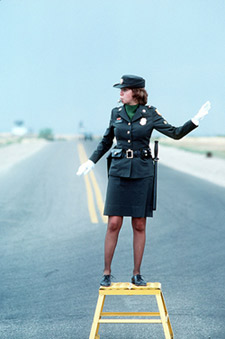4 Things Traffic Cops Can Teach Us About Integration
 When you envision the city of Cleveland, the awful traffic ala NYC doesn’t usually come to mind, right? Driving home from work this week, torrential downpours streamed down from the suddenly gray sky, and power to the traffic lights was diminished. At Westlake’s largest intersection, this could have been pretty disastrous, but not with a reliable traffic cop ready to step up.
When you envision the city of Cleveland, the awful traffic ala NYC doesn’t usually come to mind, right? Driving home from work this week, torrential downpours streamed down from the suddenly gray sky, and power to the traffic lights was diminished. At Westlake’s largest intersection, this could have been pretty disastrous, but not with a reliable traffic cop ready to step up.
Waiting (impatiently, I admit) for my lane to be waved through the light, I couldn’t help but observe the brightly orange-clad officer confidently navigating the sea of cars. I immediately could relate to his role. The cop was a single entity directing a fairly complex situation, which without his involvement would have been a huge catastrophe. Ushered quickly through the intersection and soon cruising down the highway, I started thinking about exactly how our value at GPI comes into play, and how our strengths as a company are mirrored in the officer’s actions.
1. One entity
There is only one main traffic cop responsible for directing the entire intersection. Same as backlit features – with so many elements, you need one company to step up and direct all of the various components (structural steel, lighting products, wiring, power, controls, stone, glass, finish trims). This is true not only from a production standpoint, but from engineering, quality control, and installation. It’s a full time job!
2. Timing and Sequencing
When it comes to traffic jams, accurately timed instructions are key. Halting certain areas and moving others, the traffic officer moves with confidence with an overarching goal: to streamline. Same comes to our guidance of design, engineering, and production schedules to meet your clients’ deadlines (which are usually demanding, given our extensive work in the hospitality industry). A managing attitude is helpful in keeping all elements moving forward, from the very first sketches to final approvals.
3. Presence and Responsiveness
It would have been pretty tough for the traffic cop to direct over the phone, or from a remote location. An ability to think on your feet and react to a given set of circumstances allowed for a smoother outcome for all involved. There’s value in having physical presence at an installation. As we all know, construction sites are unpredictable!
4. Put Your Best Resources At the Most Vulnerable Areas
Backlit features are inherently interesting, easily becoming focal points of spaces and even whole buildings. Don’t put your laziest officer at the busiest intersection. For the best outcome, rely on the experts to direct the most visible (and scrutinized) areas of your design.
–> To ensure that your space doesn’t become a full blown rush hour traffic jam, choose companies with a proactive managing attitude to deliver the feature areas of your building. It’s an invaluable skill that is only developed over years of experience.
Image Credit: ExpertInfantry via Flickr Creative Commons
